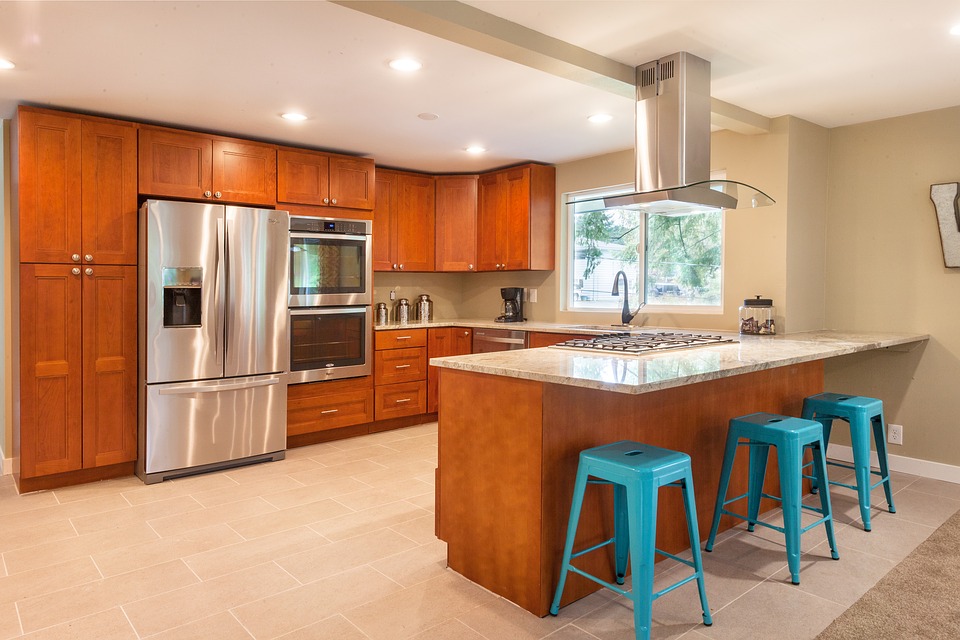 A kitchen sink vent is a pretty important component of every home. A kitchen sink vent is intended to protect your health and this is already documented in the plumbing codes. On every plumbing fixture in your house, a vent is obligatory. If your best kitchen sink is fitted with a vent, this will help to prevent the clogging of the pipes.
A kitchen sink vent is a pretty important component of every home. A kitchen sink vent is intended to protect your health and this is already documented in the plumbing codes. On every plumbing fixture in your house, a vent is obligatory. If your best kitchen sink is fitted with a vent, this will help to prevent the clogging of the pipes.
The p-trap is designed to hold some water which helps to prevent the emission of foul gas. A kitchen sink vent helps the p-trap to retain the required water in the p-trap area.
In case there is no water, your kitchen sink will be bound to smell bad. Mostly, these kitchen sink vents are joined to the main vent that rises to the rooftop.
For any kitchen sink, a sink vent is located around the drain area. When the sink is full of water, a kitchen sink vent helps to prevent the creation of a vacuum. It allows air into the drain which in turn allows the free flow of water. Sometimes, the kitchen sink vent is connected to the sanitary tee on the wall.
In some site-built homes and mobile homes, the kitchen sink is not designed to have a vent. A kitchen sink should either have a vent under it or have it connected to the wall. In the case of mobile homes, an auto vent is used to serve the role of a kitchen sink vent.
The Installation Process Of An Auto Kitchen Sink Vent
An auto vent is like an air admittance valve. It allows entry of air into the sink’s drainage system. When the fixture is in use, this valve allows entry of fresh air into the sink’s drain system. At the same time, it prevents the flow back of foul sewer gases into the house. Down here is the installation process of an auto vent.
- First, you will have to remove the drain pipes and the old traps so that you can create adequate working space. Before you continue, ensure you have the following: extra pipe, auto vent, sanitary tee, and a coupling which must be threaded on one of its sides to help secure the new vent. Finally, you will need a regular coupling in case you will wish to lengthen the height of the drain. You might also want to install a new trap.
- You need to understand the right height of the sanitary tee. In doing this, put the trap together and place it freely on the base of the sink pop up drain.
- Now, establish the layout for various fittings and pipes. I will advise you to leave plenty of space under your kitchen sink when planning the layout. In the future, if you have to remove the trap, this should be easy because your layout enables the drainage pipes to be accessible. In short, plan to situate the auto vent as high as possible under your kitchen sink. It will be good to help with the ease of future works and repairs under the kitchen sink.
- Right down under your kitchen sink, put together all the fittings and pipes without glue. Before applying the glue, you need to ensure that all the components are fully aligned. Dry fitting helps you to reduce the margins of error.
- Once you confirm that every component is aligned, remove the arrangement. Before you remove the layout, mark the parts and fittings so that you don’t make any error when applying the glue. After this, place each drain part in the right position as you glue them permanently.
- Complete the installation process of your auto vent by applying some plumber’s tape on its threads and secure it. After this, you can test whether there are any leakages.
Installing A Kitchen Sink Vent That Connects To The Roof
Before you get started, ensure that you have the following requirements.
- PVC cement
- Drill
- Hole saw 1 5/8”
- Hacksaw
- PCV pipe, 1 ½”
- 3 long-sweep elbows, 1 ½”
- PVC sanitary tee, 2” × 2” × ½”
- Chalk line
Down here is the installation procedure.
- Inside the wall cavity, install a sanitary tee in the kitchen sink’s drain line. Use the PVC sanitary tee that you already have in the list of requirements. It fits well for a 2” length waste line.
From the base of the p-trap, the installation should be less than 4 feet. Using the PVC cement, glue the sanitary tee to the pipe that connects to the kitchen sink.
The same should be done on the continuation of the drain on the other side of the sanitary tee. In doing this, ensure that the 1 ½” port faces forward. - Using a hacksaw, cut a two-inch length of type 1 ½” PVC pipe. Use glue to connect this to the 1 ½” port that is available in the tee. Complete this part by gluing a sweep elbow to the pipe that faces the wall.
- Spot a location on a window where the pipe can turn upwards and snap a chalk line on a point beyond it. The line should have at least an upward slope of a quarter an inch per foot.
- Into each stud, drill a 1 5/8” hole between the point where the vent rises and the elbow. You can use a hole saw or a drill to do this. Ensure each hole is centered on the line.
- Slice a 1 ½” pipe length to link between where the vent rises and the elbow. You will insert it through the holes that you created. Glue the pipe to the elbow. To the other side of the pipe, glue a second elbow and ensure that the outlet faces upwards.
- Finally, extend the vent to the attic by drilling 1 5/8” hole into the top plate of the wall. Direct it to the main vent stack. Find a reducing tee that fits the new vent and the stack and tie it.
Conclusion
In summary, we have seen how you can easily install a kitchen sink vent. We have discussed the known and commonly used kitchen sink vents. For mobile homes, we have recommended the use of auto vents because they are pretty efficient. Vents that connect to the roof are also effective for particular types of homes. Depending on the type of vent that you require in your home, you can easily install it when you follow this simple installation process.
